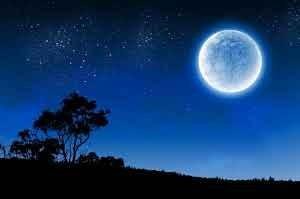Super Blue Moon '
 A unique form of the moon will be seen, which astronomers call 'super blue moon' in English.
A unique form of the moon will be seen, which astronomers call 'super blue moon' in English.
According to Neeruj Mohan, president of the Public Outreach Committee of Astronomical Society of India, when the full moon is full 2 times in the first month of the Gregorian calendar, there is a possibility of being a 'Blue Moon'. 3 astronomical phenomena, including full moonlight, super moon and blue moon, are coordinated with the 'super blue'According to Neeruj Mohan, president of the Public Outreach Committee of Astronomical Society of India, when the full moon is full 2 times in the first month of the Gregorian calendar, there is a possibility of being a 'Blue Moon'. 3 astronomical phenomena, including full moonlight, super moon and blue moon, are synchronously called 'super blue moon'.A time is rotating in its orbit, when the moon is near the earth on the full moon day. In this case, the size of the moon is large and the color looks very bright. During that time, due to the large size of the moon, it is called the 'super moon'.
For the second time in the first month of the Gregorian calendar, 'Super Moon' is called 'Blue Moon'. Although its relation is not exactly the color of the moon. In reality, 'Blue' is considered synonymous to Westernity in Western countries. Due to the specific form of the moon, it has been called 'Blue' here. If there is lunar eclipse on 'Blue Moon', then it is called 'Super Blue Moon' eclipse.
According to the Indian time of 31 January, the earth will be witness to this astronomical phenomenon between 6.00 to 22 minutes and 7 minutes and 38 minutes. This will be the first assumption of 2018. Its coincidence is rare and it can be seen in many years intervals. This day is very special for science lovers, because they are eager to see the typical form of the Moon.According to Sameer Dhunde, astronomer associated with the Inter University Center for Astronomy and Astrophysics, Pune, "Moon will appear 14 percent larger than normal and 30 percent more luminous on the day of the super moon, although it is not easy to get an idea of this difference with the naked eyes. '
According to astronomers, this is a normal astronomical phenomenon. While circling the earth, the moon completes one round of 273 days, but there is a difference of 295 days between 2 consecutive full moon. The reason for this gap between 2 full-moon is to be the oval or long-circular orbit of the Moon. Usually in 1 month there are 28, 30 or 31 days. In such a situation, there is less chance of completion of full moon twice in 1 month, hence 'Super Moon' also happens after many years.One feature of this event is that despite the lunar eclipse, the moon will look like a copper color rather than completely black. According to Dr. Sameer, it has the role of that transparent environment of the Earth. During the lunar eclipse, there is no light on the moon due to the earth being formed between the sun and the moon. During this time, various colors present in the sun's light get scattered in this transparent environment, while the red color does not get completely shattered and it reaches the moon. During 'Blue Moon', the color of the moon looks like copper due to this red color. '
Traditional Indian calendars are usually based on the position of the moon. In Hindu, Islamic and Tibetan calendars, there can not be more than one full moon in a month, because according to these calendars, the beginning and the end of the month is due to the new moon or full moon, hence the 'blue moon' relates to cultural recognition rather than a celestial phenomenon. More is considered.There is also the illusion that the last time 'Blue Moon' was shown on December 30, 1982 or on 31 March 1866. According to the scientists, 'Blue Moon' was shown on both of these dates. But in many other countries including India, 'Blue Moon' was last seen on 30 December 1982, on 31 March 1866, 'Blue Moon' was shown in other parts of the world including the United States. The reason for this misconception is the difference in the standard time between the two countries.
The last time a 'Blue Moon' eclipse was on December 30, 1982, which was visible in the eastern part of India. On December 1 and December 30, 1982, both were full moon days, the second full moon was called 'Blue Moon'. Although according to the American Time Zone, Purnima was on 30 November 1982 instead of December 1, it was not considered 'blue moon' in America. This is the reason why the American media is being propagated that this time 152 years after 'Blue Moon' will appear. Next time 'Blue Moon' is going to be on December 31, 2028.
I'm just an ordinary guy living in Russia. I write my blog about everything that can be interesting for everyone! Subscribe for my blog))
Happy
Happy